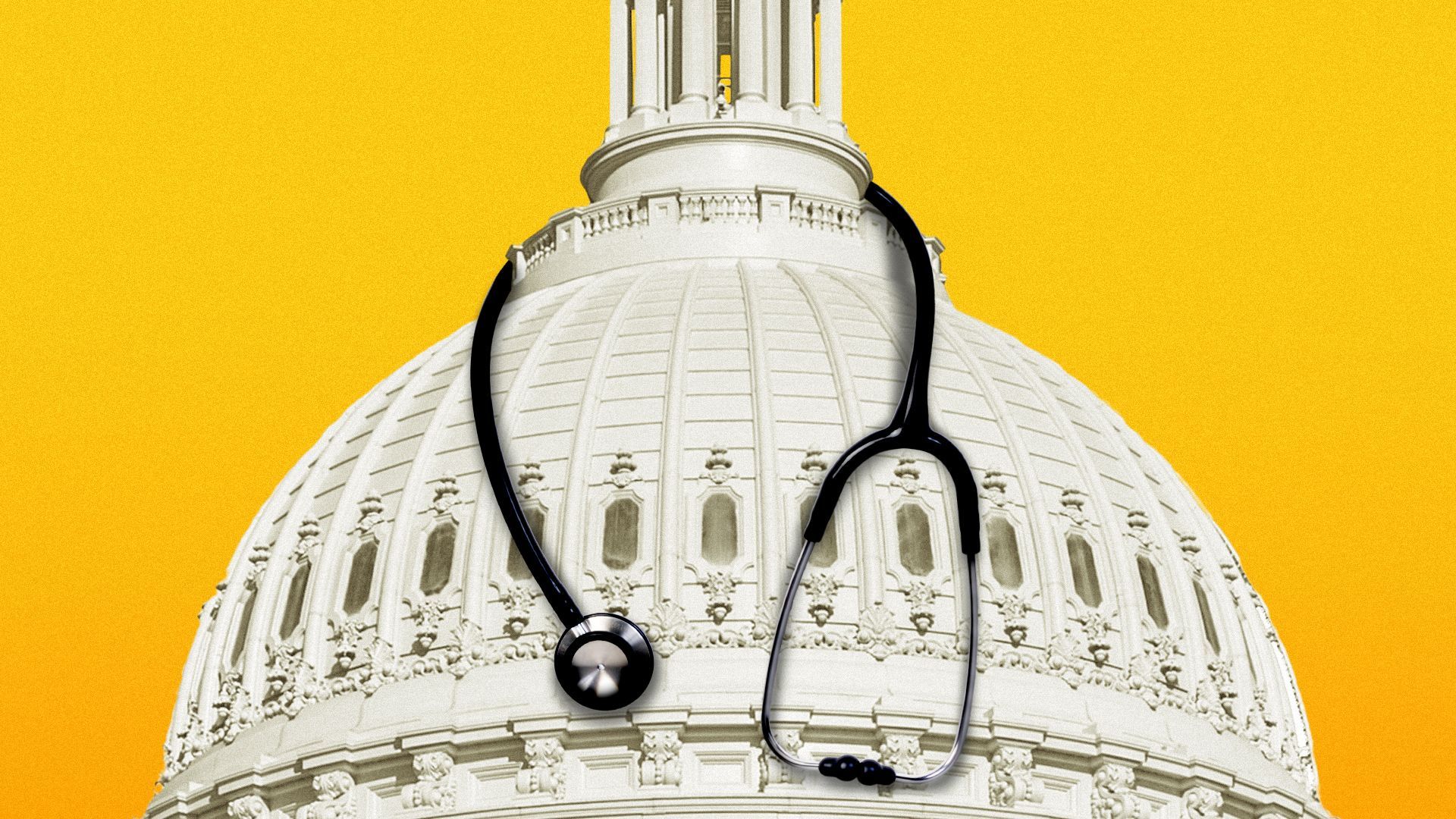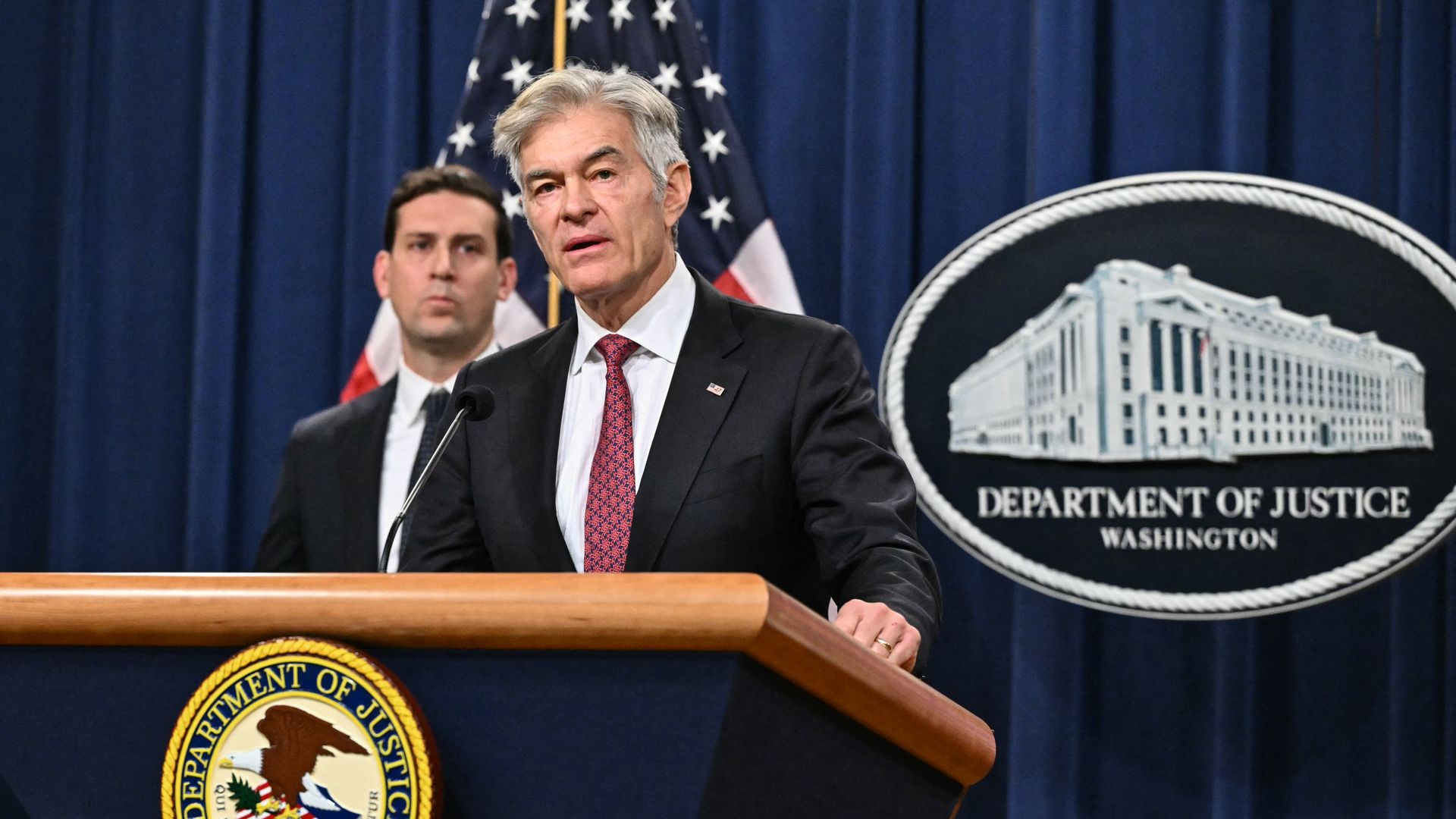|
||
| PRESENTED BY VACCINATE YOUR FAMILY | ||
| Axios Vitals | ||
| By Maya Goldman and Tina Reed · Jul 01, 2025 | ||
|
Good morning, Vitals crew. Today's newsletter is 924 words or a 3.5-minute read. |
||
| 1 big thing: The cost of the megabill's coverage losses | ||
| By Maya Goldman | ||

|
||
|
Illustration: Aïda Amer/Axios |
||
|
Nearly 12 million people would lose their health insurance under President Trump's "big, beautiful bill," an erosion of the social safety net that would lead to more unmanaged chronic illnesses, higher medical debt and overcrowding of hospital emergency departments. Why it matters: The changes in the Senate version of the bill could wipe out most of the health coverage gains made under the Affordable Care Act and slash state support for Medicaid and SNAP. The big picture: The stakes are huge for low-income and working-class Americans who depend on Medicaid and subsidized ACA coverage.
Zoom out: The Medicaid and ACA changes will also affect people who keep their coverage.
The other side: The White House and GOP proponents of the bill say the health care changes will address fraud, waste and abuse, and argue that coverage loss projections are overblown. |
||
|
|
||
| 2. House wants input on final version of the bill | ||

|
||
|
Illustration: Gabriella Turrisi/Axios |
||
|
Congressional Republicans continue to race toward a July 4 deadline to pass the sweeping bill, with the House GOP trying to squeeze some final changes into the Senate's version of the package.
Zoom in: Johnson held a call yesterday with Republicans concerned about the Senate's Medicaid cuts, Axios has confirmed. Meanwhile, Senate Republicans turned back Democratic efforts to strip health-related and other provisions from their version of the bill.
Senators also overwhelmingly voted down an amendment from Sen. Susan Collins (R-Maine) to double the size of a rural hospital fund, to $50 billion. |
||
|
|
||
| 3. DOJ boasts $14.6B health care fraud "takedown" | ||
| By Tina Reed | ||

|
||
|
CMS administrator Mehmet Oz speaks during a press conference on the health care fraud enforcement. Photo: Mandel Ngan/AFP via Getty Images |
||
|
Federal officials yesterday said they busted a series of health fraud schemes spanning medical supply, telehealth and genetic testing companies, as well as opioid trafficking, that involved more than $14.6 billion in improper charges. Why it matters: As part of the record-breaking operation, CMS announced it also prevented $4 billion in fraudulent claims from being paid. Zoom in: Officials seized over $245 million in cash, luxury vehicles, cryptocurrency and other assets as part of the "takedown."
Between the lines: The activity included Operation Gold Rush, a nationwide investigation begun in 2023 that encompassed the largest loss ever recorded in a health fraud case, officials said.
|
||
|
|
||
|
A MESSAGE FROM VACCINATE YOUR FAMILY |
||
| Vaccines save lives, don’t put coverage at risk | ||
|
|
||
|
Millions of Americans rely on their provider’s advice and choose to be vaccinated. Advisory Committee on Immunization Practices (ACIP) recommendations ensure they are covered by insurance. Don’t put millions of Americans’ vaccine coverage at risk. |
||
| 4. Millions attend schools in urban heat zones | ||
| By Alex Fitzpatrick | ||
 Data: Climate Central; Chart: Alex Fitzpatrick/Axios Most K-12 public students in the biggest U.S. cities attend schools in extreme urban heat zones, a new analysis finds. Why it matters: The heat island effect can make some neighborhoods notably warmer than others, especially during heat waves like the one that recently struck much of the country.
Driving the news: About 76% of public K-12 students in the 65 most populous U.S. cities attend schools where the heat island effect increases temperatures by at least 8°F, per a new analysis from Climate Central, a climate research group.
|
||
|
|
||
| 5. Catch up quick | ||

